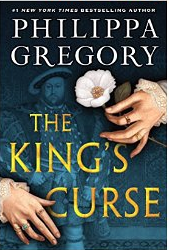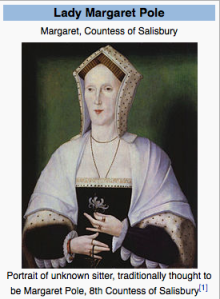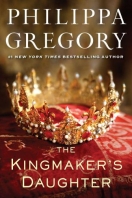I’ll tell the truth, shall I? I have been a bit annoyed with some of the historical fiction I’ve read recently. It is my fault for choosing too many books with the storyline “girl goes to court, meets [insert royal figure], chaos ensues.” This storyline seems prevalent in the Tudor/Elizabethan novels I’ve read. The cure for my malaise? Reading Scottish historical fiction.
Margaret Skea has just this month published the sequel – “A House Divided” – to her first novel; “Turn of the Tide,” which I savored over several weeks and just finished this weekend. I loved the first book (see review here) and this one was, I thought, even better. That makes some sense – an author learns a lot between book one and book two. Skea has skillfully woven a gripping story set again primarily in Ayrshire about the Cunninghame-Montgomerie feud in a restless time period when superstition and witch trials were on the rise. She has done her research – knows the landscape, the history of the feud, and has given it all perfect context with the Munro’s story.
“A House Divided” continues the story of the Munro family, forced into hiding from Glencairn’s heir, the great arch-villain of the series, William Cunninghame. In the sequel, William Cunninghame has taken possession of the Munro home at Broomelaw and is rebuilding the tower and surrounding holdings for himself. Adam Munro is in France, fighting with the Scots Garde for the French Henri IV. Kate Munro has taken the surname Grant, and is living with her children at Braidstane – a Montgomerie stronghold.
There’s great dramatic tension from the get-go. Kate makes a living as a “wise woman” – a cross between a herbalist and midwife. It is a dangerous occupation in late 16th Century Scotland, where witchcraft trials have become commonplace. The trouble begins when Kate is called to help Margaret Maxwell, the wife of a Cunninghame supporter. It is an understatement to say that this good deed does not go unpunished, and leaves Kate and her family increasingly vulnerable to discovery. Kate is further put at risk when her reputation spreads and she is asked to attend to Queen Anne, the wife of James VI. Like any good healer she goes where and when she must – even with a high chance of seeing Maxwell and William Cunninghame there.
Court?! Yes, there were a few trips to Court – the Court of James VI to be exact – but the characters in the novel are not conduits who get involved in the affairs of the Court, rather the opposite – which of course saves it from my perturbation with the “girl goes to Court” theme.
I loved this book – the way the tension rose and dipped and then rose higher, dipped in brief resolution and rose again – finally to a great crescendo. I suspected early on what was coming but that in no way diminished the grip the novel had on me. I can’t spoil it for you. I was on tenterhooks. I suppose I will never be sure what a novelist will do to their characters since Eddard Stark died, so I could not be sure of the ending. I was all-in for the journey – and you will be too.
For lovers of Scotland, Scottish history, and historical fiction more broadly, this is a great read. It left me wondering what the Munro’s will do next. That’s a good sign – ready for no. 3!










